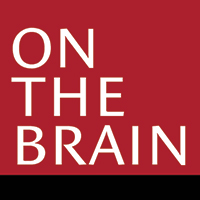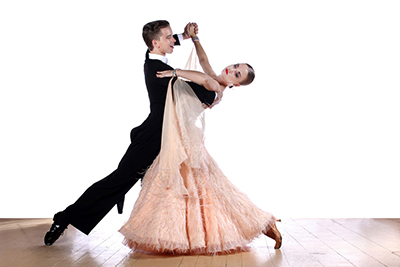Winter 2015
Millions of Americans dance, either recreationally or professionally.
 How many of those who are ballroom dancing, doing the foxtrot, break dancing, doing the foxtrot, break dancing, or line dancing, realize that they are doing something positive for their bodies—and their brains? Dance, in fact, has such beneficial effects on the brain that it is now being used to treat people with Parkinson’s disease, a progressive neurological movement disorder. “There’s no question, anecdotally at least, that music has a very stimulating effect on physical activity,” says Daniel Tarsy, MD, an HMS professor of neurology and director of the Parkinson’s Disease and Movement Disorders Center at Beth Israel Deaconess Medical Center (BIDMC). “And I think that applies to dance, as well.”
How many of those who are ballroom dancing, doing the foxtrot, break dancing, doing the foxtrot, break dancing, or line dancing, realize that they are doing something positive for their bodies—and their brains? Dance, in fact, has such beneficial effects on the brain that it is now being used to treat people with Parkinson’s disease, a progressive neurological movement disorder. “There’s no question, anecdotally at least, that music has a very stimulating effect on physical activity,” says Daniel Tarsy, MD, an HMS professor of neurology and director of the Parkinson’s Disease and Movement Disorders Center at Beth Israel Deaconess Medical Center (BIDMC). “And I think that applies to dance, as well.”
Stimulating movement
Scientists gave little thought to the neurological effects of dance until relatively recently, when researchers began to investigate the complex mental coordination that dance requires. In a 2008 article in Scientific American magazine, a Columbia University neuroscientist posited that synchronizing music and movement—dance, essentially—constitutes a “pleasure double play.” Music stimulates the brain’s reward centers, while dance activates its sensory and motor circuits.
Studies using PET imaging have identified regions of the brain that contribute to dance learning and performance. These regions include the motor cortex, somatosensory cortex, basal ganglia, and cerebellum. The motor cortex is involved in the planning, control, and execution of voluntary movement. The somatosensory cortex, located in the mid region of the brain, is responsible for motor control and also plays a role in eye-hand coordination. The basal ganglia, a group of structures deep in the brain, work with other brain regions to smoothly coordinate movement, while the cerebellum integrates input from the brain and spinal cord and helps in the planning of fine and complex motor actions.

Discover the latest news on the brain from Harvard Medical School
Researchers are revealing more about how the brain and nervous system
work– and translating those insights into new treatments
While some imaging studies have shown which regions of the brain are activated by dance, others have explored how the physical and expressive elements of dance alter brain function. For example, much of the research on the benefits of the physical activity associated with dance links with those gained from physical exercise, benefits that range from memory improvement to strengthened neuronal connections.
A 2003 study in the New England Journal of Medicine by researchers at the Albert Einstein College of Medicine discovered that dance can decidedly improve brain health. The study investigated the effect leisure activities had on the risk of dementia in the elderly. The researchers looked at the effects of 11 different types of physical activity, including cycling, golf, swimming, and tennis, but found that only one of the activities studied—dance—lowered participants’ risk of dementia. According to the researchers, dancing involves both a mental effort and social interaction and that this type of stimulation helped reduce the risk of dementia.
In a small study undertaken in 2012, researchers at North Dakota’s Minot State University found that the Latin-style dance program known as Zumba improves mood and certain cognitive skills, such as visual recognition and decision-making. Other studies show that dance helps reduce stress, increases levels of the feel-good hormone serotonin, and helps develop new neural connections, especially in regions involved in executive function, long-term memory, and spatial recognition.
 Dance has been found to be therapeutic for patients with Parkinson’s disease. More than one million people in this country are living with Parkinson’s disease, and, according to the Parkinson’s Disease Foundation, each year another 60,000 are diagnosed with the disease. Parkinson’s disease belongs to a group of conditions called motor-system disorders, which develop when the dopamine-producing cells in the brain are lost. The chemical dopamine is an essential component of the brain’s system for controlling movement and coordination. As Parkinson’s disease progresses, an increasing number of these cells die off, drastically reducing the amount of dopamine available to the brain.
Dance has been found to be therapeutic for patients with Parkinson’s disease. More than one million people in this country are living with Parkinson’s disease, and, according to the Parkinson’s Disease Foundation, each year another 60,000 are diagnosed with the disease. Parkinson’s disease belongs to a group of conditions called motor-system disorders, which develop when the dopamine-producing cells in the brain are lost. The chemical dopamine is an essential component of the brain’s system for controlling movement and coordination. As Parkinson’s disease progresses, an increasing number of these cells die off, drastically reducing the amount of dopamine available to the brain. The Harvard Mahoney Neuroscience Institute hosts a
The Harvard Mahoney Neuroscience Institute hosts a  Since its founding in 1990, the Harvard Mahoney Neuroscience Institute has helped advance neuroscience at Harvard Medical School by promoting public awareness of the importance of brain research and by helping to fund research at the School’s Department of Neurobiology.
Since its founding in 1990, the Harvard Mahoney Neuroscience Institute has helped advance neuroscience at Harvard Medical School by promoting public awareness of the importance of brain research and by helping to fund research at the School’s Department of Neurobiology.